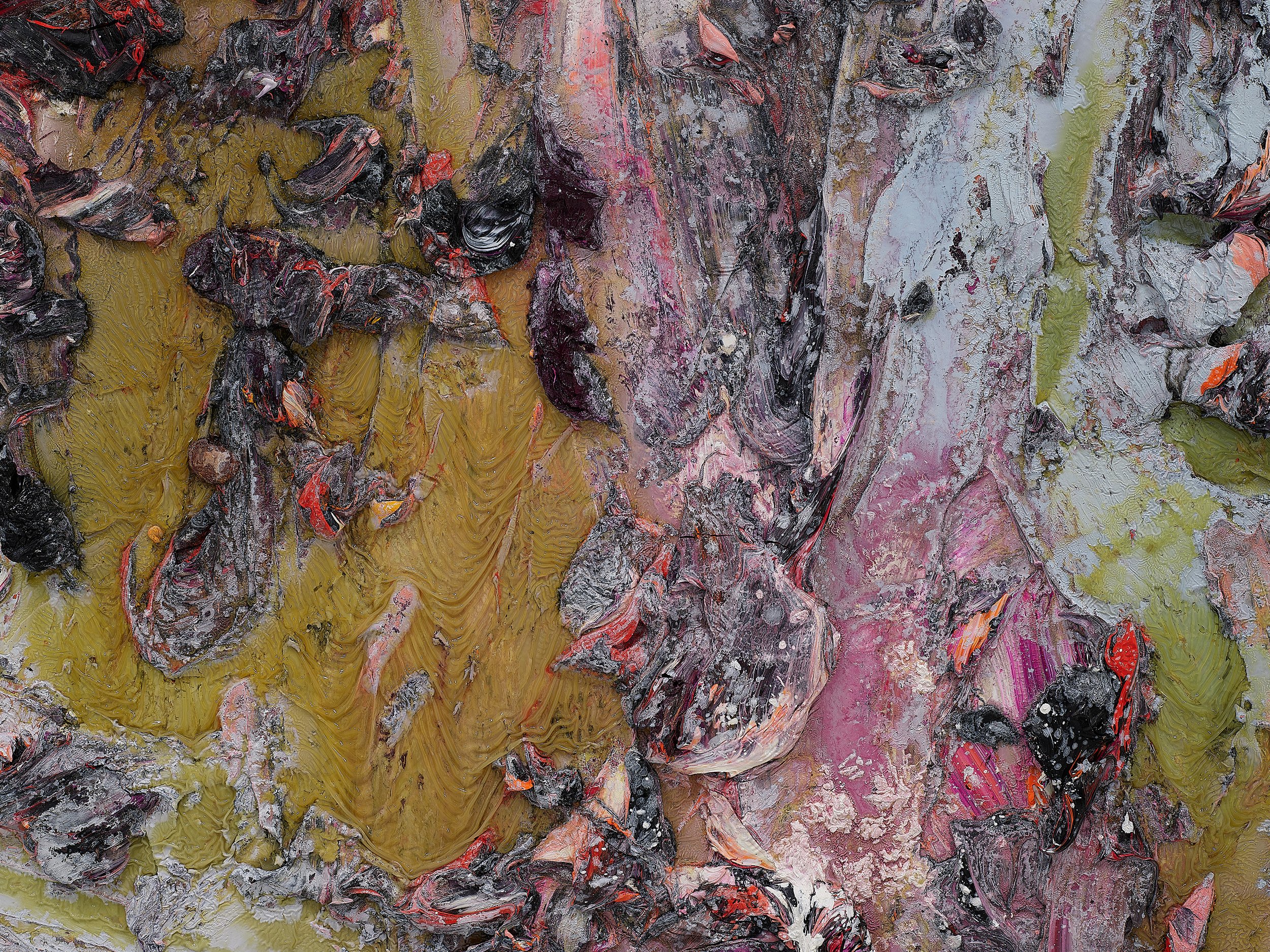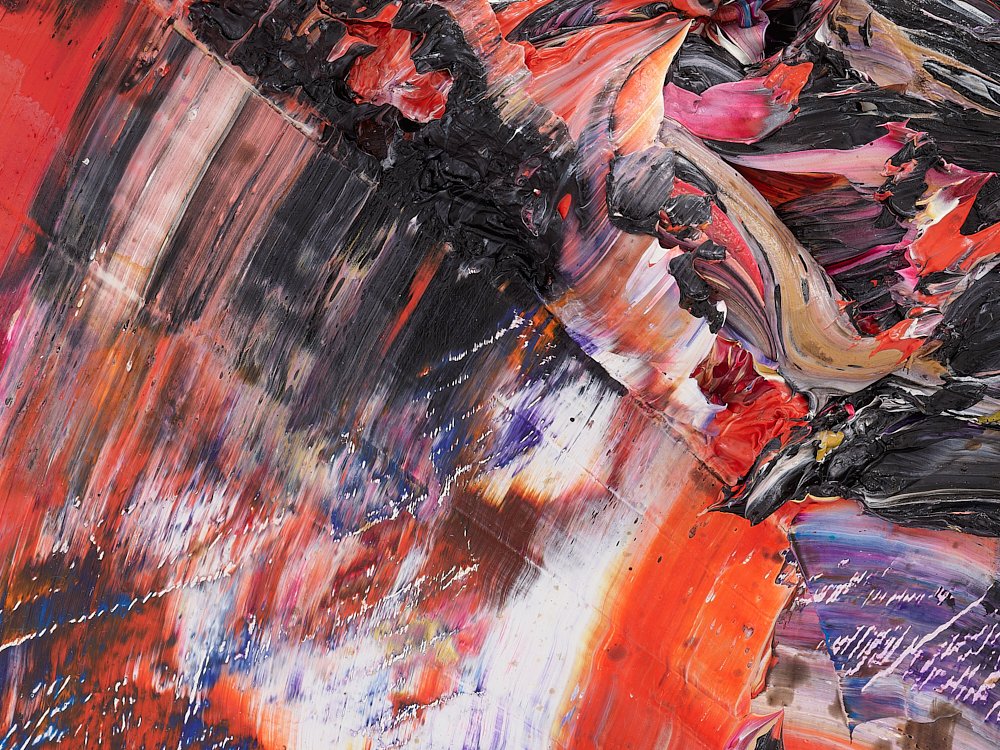
TIDSOPTIMIST
Micki Meng, San Francisco, CA
March 30th, 2023- April 28th, 2023
With his heady all-over abstractions, painter Gabriel Mills confronts the horror vacui of the canvas, arriving at compositions whose balance seems to transcend chaos. His paintings are characterized by a raw materiality that has been coaxed and muscled into equilibrium. Mills abuts writhing gestures of near-sculptural impasto with pools of pigment and skins that threaten to flake away. The result evokes viscera in places, and geology in others. These are landscapes, bodily and earthen, that are at once fragile and abundant. -Annie Godfried Larmon
Mills belongs to a lineage of artists who have reconceived the terms of abstraction from a social or psychological realm. He summons the rutted, ashen landscapes of Anselm Kiefer, as well as Yayoi Kusama’s ongoing series of Infinity Nets, through which she seeks to obliterate herself through obsessive, repetitive mark-making. There’s an element of catharsis at play, or an oblique processing of social injustice or instability. But Mills’s strongest forebears are Frank Bowling, who retooled the visual language of Color Field painting, and Jack Whitten—one sees echoes of Whitten’s searching squeegee smears here, as well as his methods of working back into images by shaving them away, exposing them. Though where Whitten responded to the developments of new imaging technologies in his time (inkjet printing, Xerox), Mills is resolute in his search for new meaning in traditional modes and materials. - Annie Godfried Larmon
For the artist, the relationship of detail to gestalt in these paintings reflects a broader inquiry into context and translation. As he works, Mills listens to music that features non-linguistic verbal communication—the titles of some of his paintings share the names of these songs, including the Latvian Radio Choir performing Gājputni (a word that translates to migratory birds), or Kid Cudi’s humming track Copernicus Landing—and he considers what significance emerges from this kind of transmission that is more open to interpretation. Like many artists before him, including Sol Lewitt, Robert Ryman, and Fred Wilson, Mills once worked as a museum security guard. He dates the genesis of these paintings to his days at the Metropolitan Museum of Art, where he would sketch and study while he kept watch.
He describes a game he would play, wherein he would select words from museum displays and void the letters of linguistic significance before rearranging them according to their formal properties. Once, he arrived at the word Tidsoptimist, which he learned translated to “time optimist” in Swedish. He identified with the idea, but later discovered it had the more negative implication of procrastinator. Mills channeled these shifts in understanding, reckonings with communicative material, in his approach to the eponymous painting. Its abraded and reworked surface evinces a deep and thorough processing of matter, information, and meaning.
-Annie Godfried Larmon























